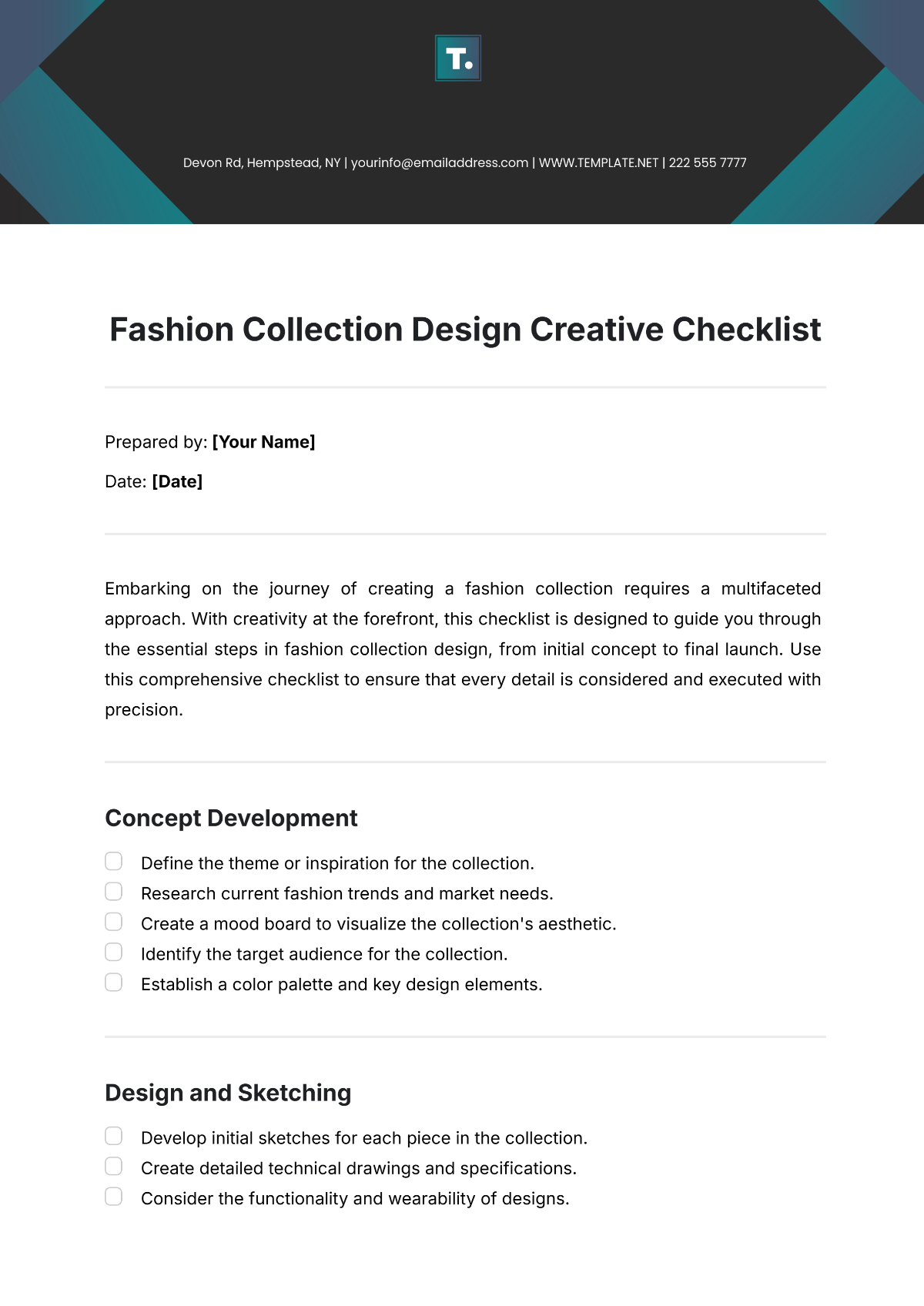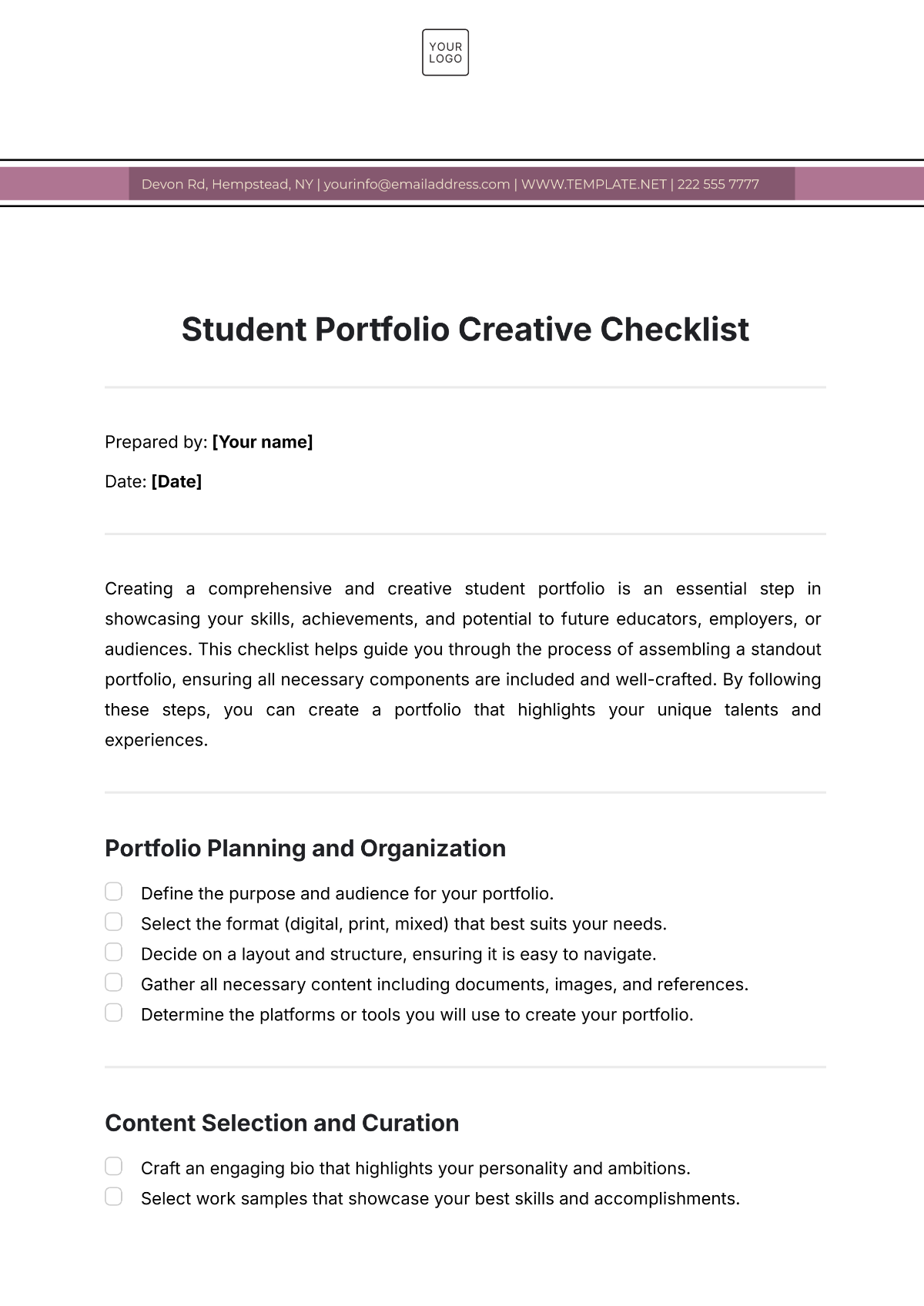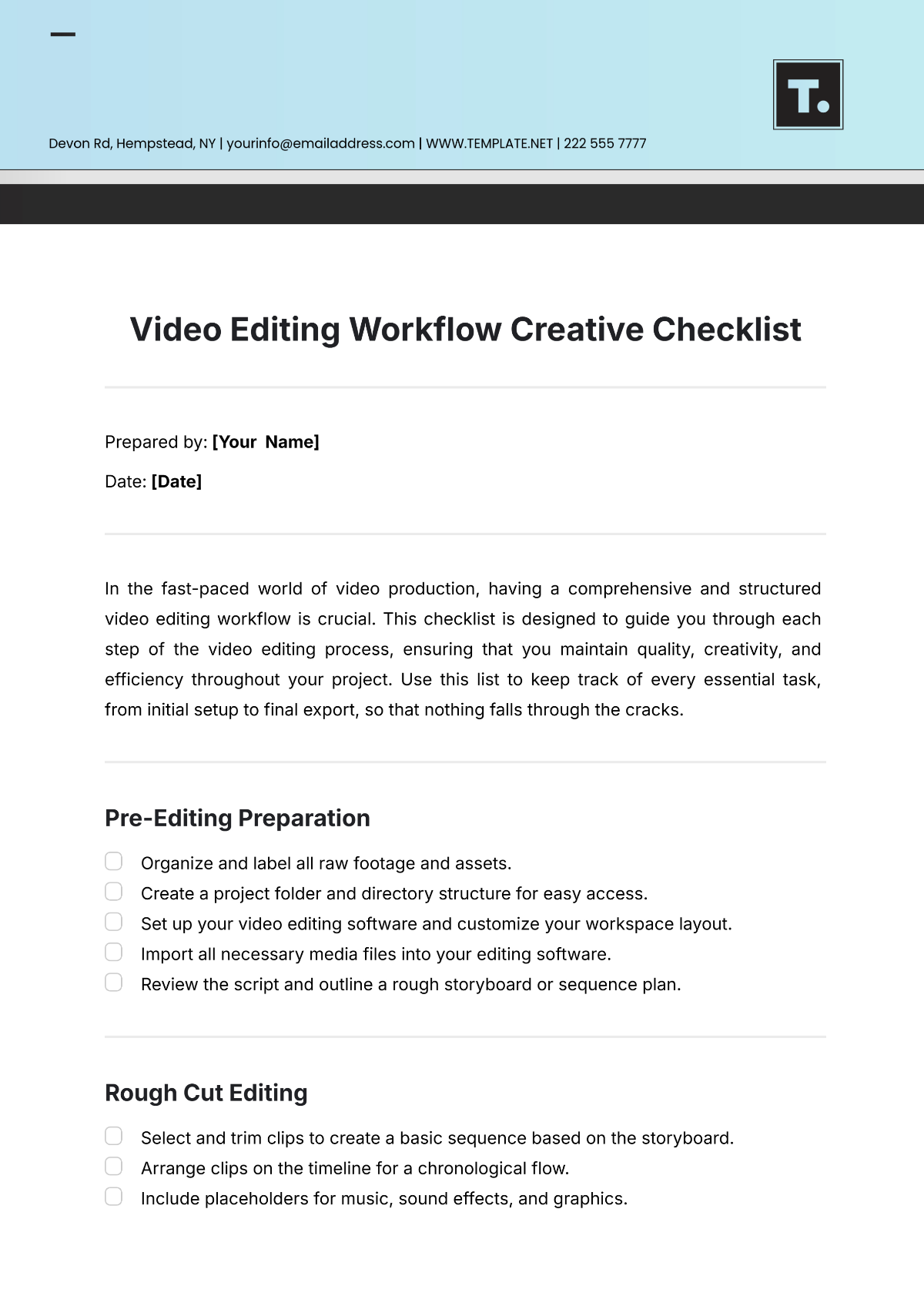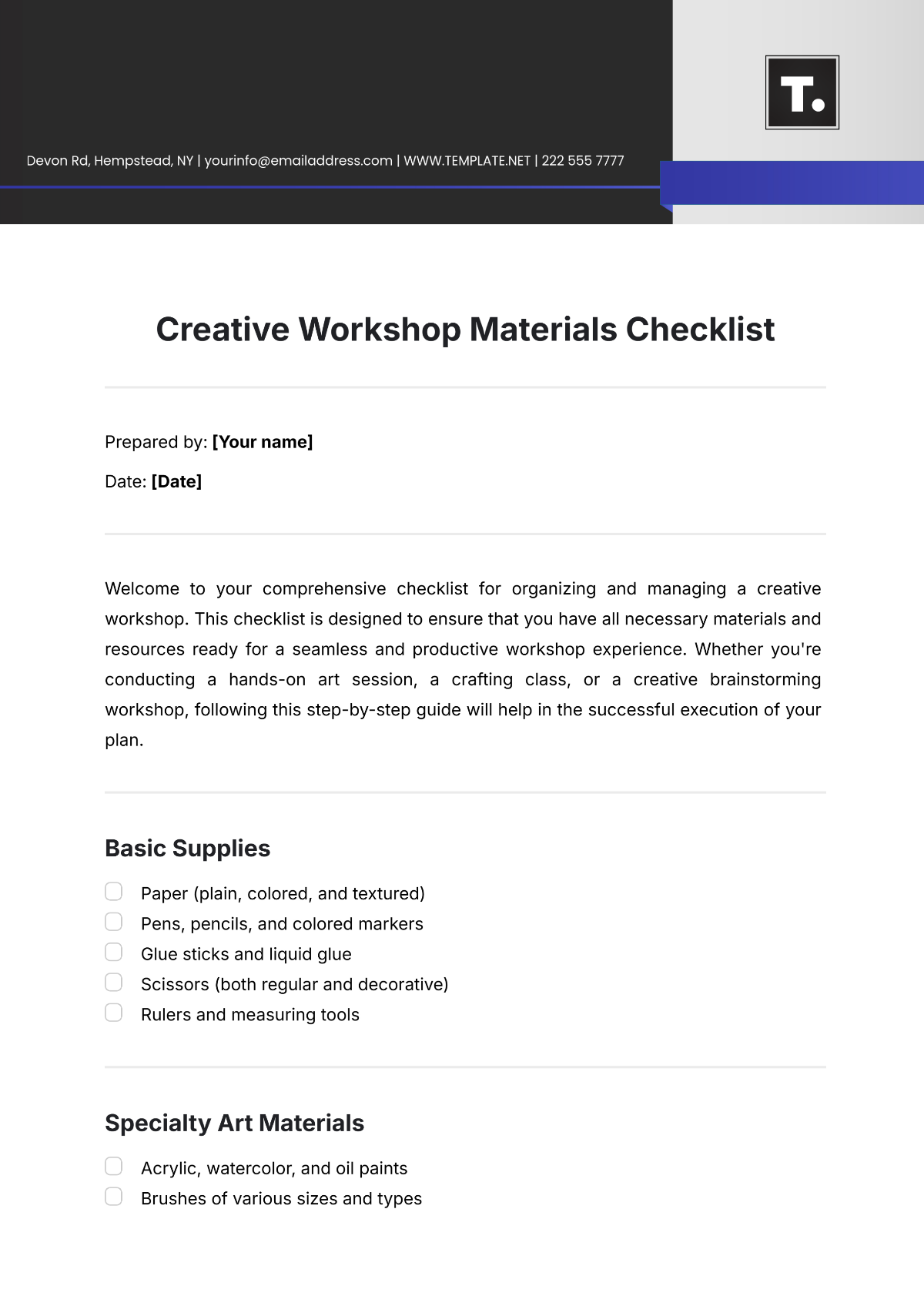Calligraphy Design Creative Checklist
Prepared by: [Your Name]
Date: [Date]
Creating beautiful and expressive calligraphy design requires attention to detail, creativity, and adherence to specific design principles. This comprehensive checklist is designed to guide you through each stage of your calligraphy project, ensuring that you cover all essential aspects and produce remarkable pieces with elegance and precision.
Gathering Materials and Tools
Ensure all calligraphy pens are functional and vary in nib sizes.
Use high-quality paper like Bristol or watercolor for calligraphy.
Organize ink supplies: black, colored, calligraphy-specific inks.
Check availability of pencil and ruler for sketching guidelines.
Gather erasers and white-out for corrections.
Source lighting tools to ensure good visibility (lamp or natural light).
Obtain a set of calligraphy guides, if needed, for practice or reference.
Design Planning
Define the purpose of your calligraphy piece (e.g., invitation, artwork).
Select a style of calligraphy appropriate for the project (e.g., modern, brush, Gothic).
Plan the layout and arrangement of text lines.
Establish sizing and spacing guidelines for each line and letter.
Develop a color scheme and embellishment approach.
Create initial sketches to conceptualize the final piece.
Execution of Design
Carefully draft guidelines with a pencil to maintain alignment.
Begin writing with light pressure to adjust nib flow.
Maintain consistent spacing between letters and words.
Apply varying pressure to create desired thickness and thinness in letters.
Pause and correct any mistakes before continuing.
Decorate with flourishes, if appropriate, once text is dry.
Add colorful accents or illustrations depending on the design plan.
Review and Refinement
Re-evaluate the final piece for any missed errors or enhancements.
Gently erase remaining pencil guidelines.
Trim edges or mount as necessary for presentation.
Apply any protective finishes or fixatives to preserve work.
Consider framing or packaging for delivery.
Additional Considerations
Document the process for future reference or portfolio entry.
Seek feedback from peers or mentors for improvement ideas.
Clean and store all tools properly to maintain their condition.
Reflect on skills learned and set goals for next projects.
Reminders
Take regular breaks to avoid hand fatigue and maintain focus.
Ensure your workspace is clean and organized before starting.
Constantly practice different styles to enhance versatility.
Stay inspired by exploring historical and contemporary calligraphy works.
Remember that patience and precision are crucial to perfection in calligraphy.




































